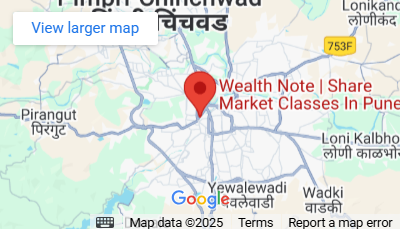Monetary policy is a financial tool which is used by the central bank (RBI in India) to control the money supply i.e., market liquidity. This policy helps to promote sustainable economic growth. Monetary policy helps to manage the economy and ensure financial stability by regulating macroeconomic factors such as Inflation, Gross Domestic Product (GDP), and unemployment by influencing,
- Money supply i.e. cash in the markets
- Interest rates or rates at which banks borrow from RBI
- Maintaining money supply for banks
Objectives of Monetary Policy in India
The major economic objectives of the monetary policy in India –
1. Regulation of Money Supply in the Economy
Monetary policy is structured to regulate the money supply in the economy by credit expansion or credit contraction.
- Credit expansion – Credit expansion means issuing more loans, banks can expand the money supply.
- Credit contraction – Credit expansion means giving fewer loans, banks can limit the money supply.
The Reserve Bank of India needs to control the money supply to attain economic growth needs and contract it to curb inflation.
2. Attaining Price Stability and Controlling Inflation
RBI’s main goal is to maintain price stability through monetary policy, which allows control over inflation. The money supply affects the price level of everyday products and services that we use. If interest rates are increased, it will lead to a decrease in people taking out new loans to buy real estate, and goods like phones, computers etc. which will help decrease prices to reasonable levels. Similarly, when growth is low, RBI can decrease interest rates so that people can afford these items and then the money which is spent on real estate etc is used to buy more items and discretionary expenses like dining out and travel.
3. Promoting Economic Growth
The monetary policy aims to ensure adequate availability of money and credit to support the country’s economic growth. Sectors important for the growth of our country like infrastructure, and agriculture are given loans on priority because they will be valuable for our future in multiple ways.
4. Encouraging Savings and Investments
The monetary policy promotes saving deposits and investments by regulating the interest rate and checking inflation. Higher interest rates will encourage people to invest in bank FDs and thus banks can use this cash to give out more loans to businesses and individuals.
5. Promoting Exports and Substituting Imports
The monetary policy encourages such industries by providing loans to export-oriented and import-substitution units. Interest rates if increased help government bonds increase their total return. This makes our bonds attractive to foreign investors. To buy these bonds, foreign investors have to buy the rupee. Thus the demand and value of the rupee increases. This in turn helps our importers since they have to pay fewer rupees per item sold than before. If our government wants to increase exports, an increase in interest rates is one such method.
Similarly, if the government wants to reduce the cost of imports, RBI can increase interest rates so the value of the rupee appreciates and we have to spend less to import items like crude oil, considering India depends on around 70 per cent of its needs from importing crude oil from other countries.
Factors RBI Looks at When Deciding the Monetary Policy
The major economic objectives of the monetary policy in India –
1. Repo Rate
The Repo Rate is the interest rate at which the central bank lends money to commercial banks for short periods, using government securities as collateral. Lowering the Repo Rate makes it less expensive for banks to borrow money while raising it makes borrowing more costly for banks. Lower interest rates will help banks give out more loans to businesses, which helps the business to invest in factories and hire more workers. This increases the income of people who then spend it on other things like food, entertainment etc. thus increasing economic growth.
2. Bank Rate
The bank rate, also called the discount rate, is the interest rate that a central bank takes from commercial banks to borrow when needed. By lowering the discount rate, the central bank incentivizes more borrowing, increasing the money supply. Raising the discount rate has the opposite effect, discouraging borrowing and decreasing the money supply.
3. Reverse Repo Rate
The Repo Rate is the interest rate at which the central bank lends money to commercial banks for short periods, using government securities as collateral. Lowering the Repo Rate makes it less expensive for banks to borrow money while raising it makes borrowing more costly for banks. Lower interest rates will help banks give out more loans to businesses, which helps the business to invest in factories and hire more workers. This increases the income of people who then spend it on other things like food, entertainment etc. thus increasing economic growth.
The reverse repo rate is the interest rate at which commercial banks lend money to the central bank using government securities as collateral. By raising this rate, the central bank provides commercial banks with a higher return on surplus funds deposited with it. This incentivizes banks to park more excess liquidity with the central bank, thereby reducing the money supply in the financial system.Must Read Full Blog –Will RBI’S KFS Bring Clarity to Market
Why Should Traders And Investors Care Then?
In the end these decisions can affect participants of the stock market in multiple ways. But as traders and investors, we have to look at these from a different perspective. The chain reaction to these decisions can be as follows;
1. Effect on Short-Term Traders
Short-term traders look closely at this event because commentary made by the RBI governor will decide which sectors and stocks will be affected by his decisions. This provides a good opportunity to profit from either side, by going either long or short depending on the market conditions. Generally the stocks affected by interest rate decisions are banks and non banking financial companies, which lend directly to people and businesses. Another set of companies include auto – bike and car sales depend a lot on this because individuals prefer buying these on loans and interest rate changes can increase or decrease their EMIs. Home loans are also dependent on RBI’s decisions and people may delay their house buying if they feel their emi will eat into their monthly paycheck.
2. Effect on Long Term Investors
Since long-term investors stay invested for long periods, monetary policy has little effect on their investments. However, for businesses exposed to interest rate risks, if interest rates remain high for a prolonged period, it may drastically impact profitability and may even lead to the closure of small financing businesses. In the past, high interest rates have had a chain reaction of keeping the entire economy down for years. Since businesses depend on each other. For example, US banks will spend less on information technology infrastructure if their interest rates are high. Resultantly Indian IT companies will earn lesser revenue which in turn will bring down consumption in India. People will spend less in restaurants, buy less apartments, spend less on clothes and watches, phones and gadgets. This is why as investors, it is important for us to keep track of interest rate trends to allocate our investments sensibly.
In conclusion, the monetary policy which is held every two months, is a very important event which affects not just people from the stock market, but also people from all aspects of life. Even when they are Indians or not. It affects everyone who deals with products and services used or made by us.
As investors, we need to keep track and understand monetary policy. Because it will help us make decisions which will increase our returns from investing. Equity investing is difficult, but it does not have to be complicated. To understand trading and investing in stock markets easily, we recommend you join our Wealth Note Share Market Classes in Pune. We have share market courses dedicated to helping you make money in both the short and long term.







